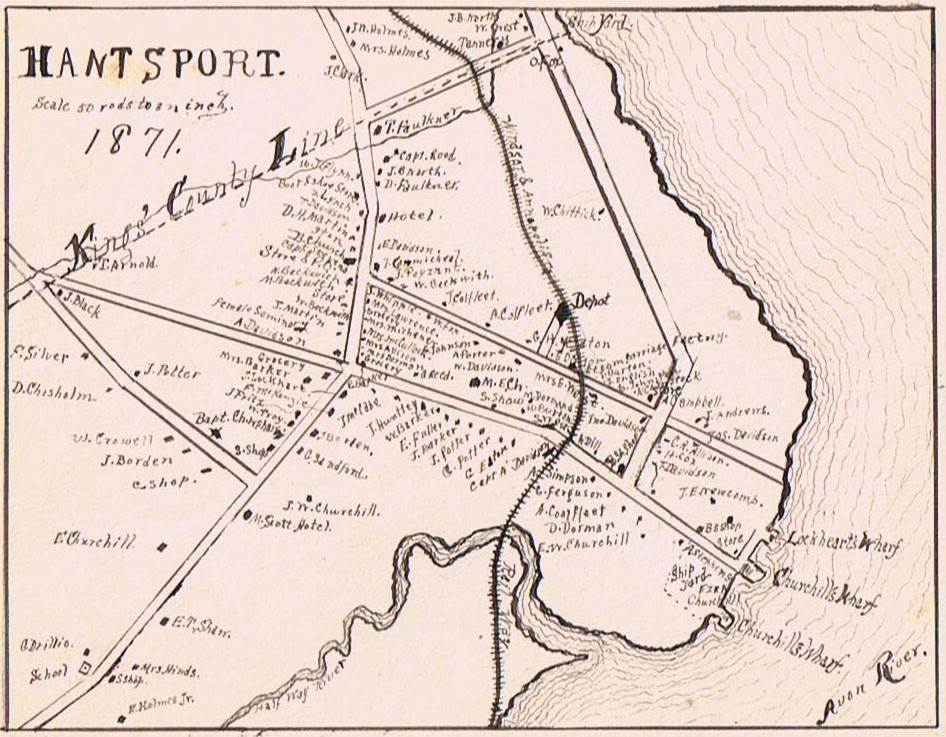
| This document is a transcription by Bob Langdon of a handwritten school paper by Harriett (Faulkner) Woodman. The main report was written in 1906 with a small addition dated 1913. Hantsport Museum file # is 981.2. |

History is the study of human nature and we must study human nature to know ourselves and others. We ought to know how we came to be what we are, so that each generation need not start again from the point and toil over the same ground but profitting (sic) by these experiences of those that came before, may advance towards higher points and nobler aims. We should try to find out about our past in order to know how to form our future. Tradition tells us of many legends and stories of our ancestors, how they suffered and endured hardships for us, in order to give us the homes we have. In this little book, by beginning at the past, I wish to the present to everyone who reads it, the growth of a small town.

Hantsport, one of our very pretty little towns, is situated on the west side of the Avon river. It is seven miles from Windsor and eleven miles from Wolfville. Here we find united the beauty of the country and the stir of a town. Hantsport is noted as a seaport town. Its most important attractions are its healthful climate, its beautiful scenery and its educational advantages. Its principal industry is ship-building. It is quite a commercial town, ships carry lumber, apples and vegetables to South America, England, West Indies and different parts of the world. It has a population of about one thousand.
Many years ago, the banks along the Minas Basin and the little river Avon, which runs into this basin, were all covered with dense forests. The only inhabitants were the Indians (sic). We do not know or cannot find out where the Indians came from. They were here when the first white man came to Nova Scotia. We find many relics and graves which the Indians left to remind us of them. Their traditions and legends have been handed down to us from generation to generation and we now have them in the book called “Legends of the Micmacs” by Dr. Silas D. Rand.
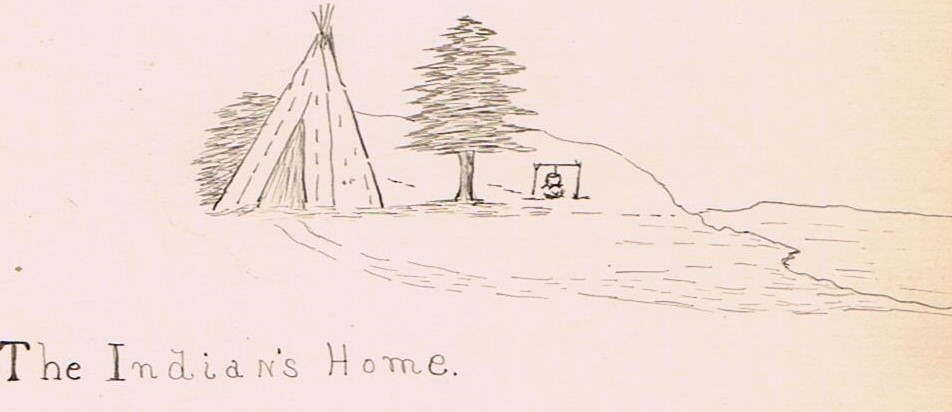
The French and the English were the first white people that came to Nova Scotia. They settled chiefly in the South Western part of the province. After a few years they found that the lands around the Minas Basin were noted for their fertility, many of the French or Acadians, as they were called, and English settled here. The Acadians took up their homes along the banks of the Avon river. Here they erected many miles of dyke, there obtaining large tracts of valuable marsh-land. At this time Pisiquid was one of the chief places, along the banks of the Avon. Between the years 1749 and 1755 the English built a fort at Pisiquid or Windsor as it is now called. The called the fort, Fort Edward.
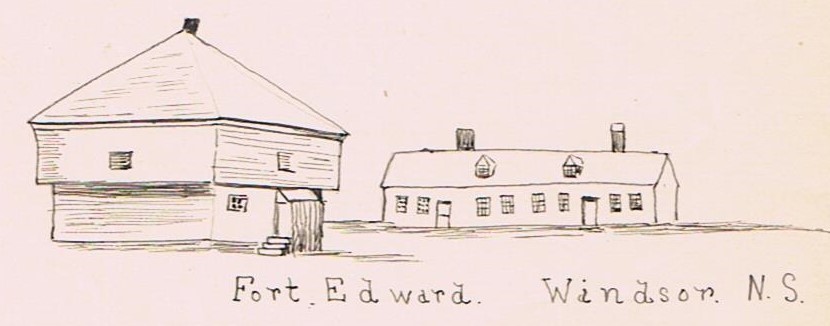
The Acadians at the time were not obeying the English rule, they had refused to take the oath of allegiance once. (Note: Once was marked out in the original document.) The English agreed to ask them once again and if they refused, to expell (sic) them from the country. The Acadians did refuse.
In 1755 Colonel Winslow, by the order of Gov. Lawrence, was sent to this district to expell (sic) the Acadians from these lands. They sailed up the river Avon, to Fort Edward. From this district about one thousand Acadians were expelled. Many of these Acadians tried to find their way back to their old homes.
In 1764 Gov. Lawrence, wanting more English people in the province, asked settlers to come to this country.
In 1786, the first white settler came to Hantsport, by the name of Mr. Earle. He lived in a cave or hole in a bank with a roof over it, under the oaks where E. Churchill & Sons afterward had a ship yard. Mr. Earle only lived here one summer. It is not known exactly what he did for a living, but he must have lived partly by fishing. He never built any house for himself.
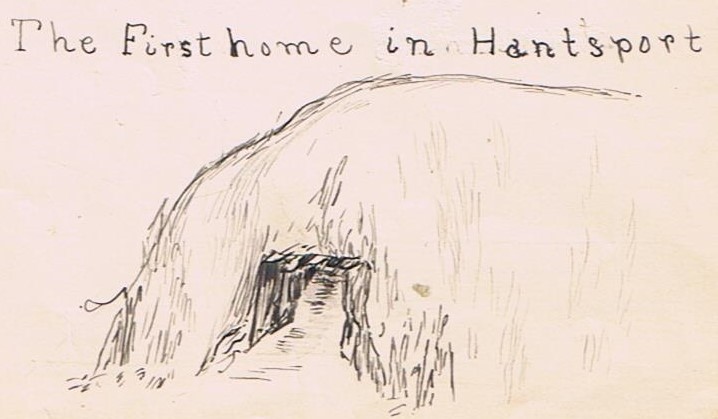
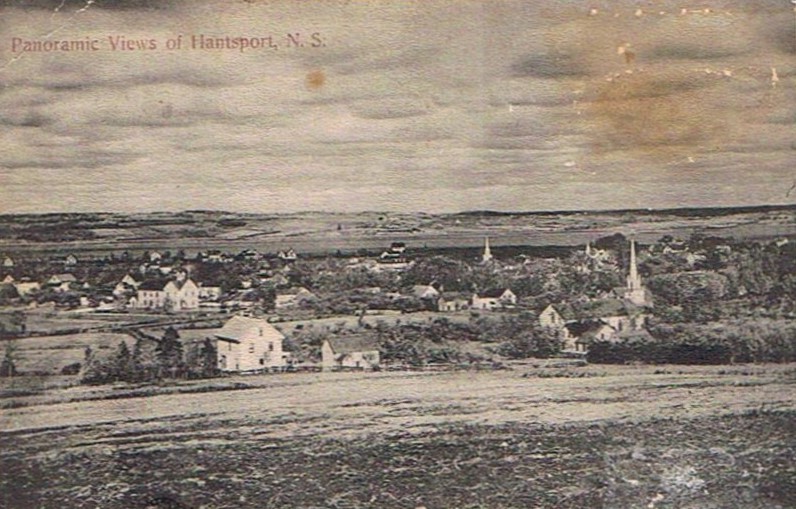
At this time there were no roads in this country, only bridle paths through the woods. The first road that was built in this country was the military road between Halifax and Annapolis. This road ran over Falmouth Mountain and passed through the farm of the late William Beckwith, at what is now called Bishopville, but then known as Half-way river. This was called the telegraph road from the fact the messages were sent from one high place to another by means of signal code, being flags of some kind. The messages being received by means of as powerful a telescope as could be had in those days.
We see all the marks of the Acadians very plainly in the dykes and willow-trees. The dykes were broken down in several places when the first settlers came, but were repaired by them.
At this time, Colonel Denson, a British officer had a government grant of all that part of Hants Co. from the brook called “The Black brook” or “Shaw’s Brook”, away north to the county line between Hants and Kings Co. including Hantsport. This man, Colonel Denson lived in Mount Denson on the highest point, hence its name. He was said to be the last man in this part of the country to own slaves.
In 1787, the first log house was built, on the site of the home of Mr. John W. Churchill, and was owned by Mr. Edward Barker, who was the first permanent settler. He bought 330 acres from Colonel Denson.
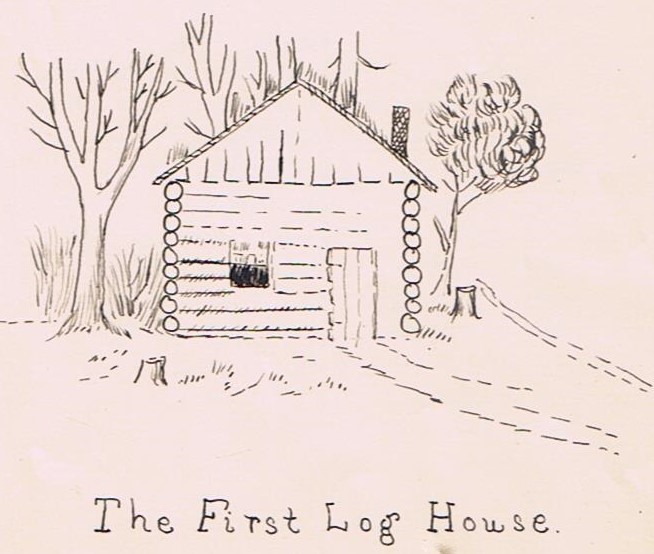
The next settler, after Edward Barker, was James Mitchner. He lived on the bank of the Avon river in a log house. In 1815, he sold out to Asa Davison and moved to East Port, Maine.
In 1823, the Holmes came from Yarmouth. Pelig Holmes settled on the Kings Co. side of the line in Horton and Elisha Holmes on the Hants Co. side in Hantsport. Elisha Holmes owned the first team in Hantsport. When he first took the team on the road, he put an ox behind and a horse ahead. With the Holmes came Lupton (sic) Faulkner and Ezra Churchill and shortly afterwards came the Dickies.
In 1824 Main St. was opened up.
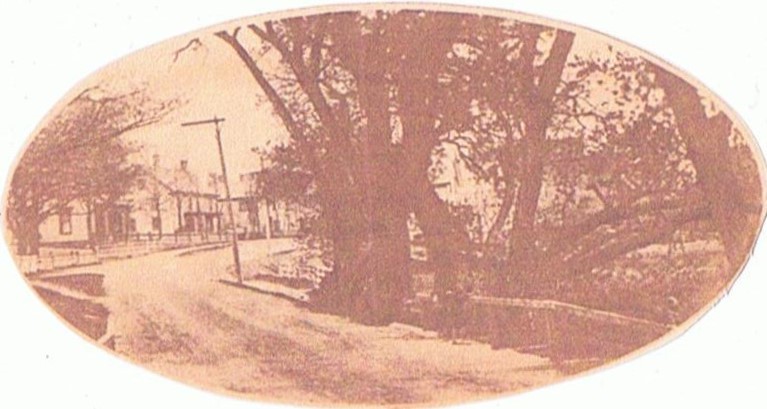
Portion of Main St. as it is today 1906. This is near the Willow brook, the boundary line between Hants and Kings Co.
The first frame house was built by Mr. Asa Davison, near the Avon river. The frame of the house came from Campbells Island. The roof was made of logs and straw.
In 1836 Hantsport received its present name. Previous to that the whole community was known as Half-Way River. It is hardly known from what source the name sprang, unless it was called Hants-port being the port of Hants Co.
There were no stores in Hantsport at this time and the people had to send to the other towns for provisions, which they did not raise themselves. The first store was kept by an old woman, who only had five dollars, worth of goods in it at a time and did not get any more until that was sold out. After a few years, a larger store was built. It was managed by Mr. Nathan Harris, who also kept the Post Office in the same building and the stagecoach, running from Windsor would stop here.
In 1840, the post road was built. Before the first school was built in Hantsport, the children had to walk to Mount Denson and Lockhartville to school. One day a little boy of the school got lost, all the school had to go out to search for him. After awhile some one found him sitting in a potato field among the potatoes. The first school house in Hantsport was built on Holmes hill. After a while they drew it down to the centre of town and it is now made into a dwelling house. They did not have a regular public school as we have now but they were all private schools. There was one large building which they built, called the “Female Seminary”, this was also a private school, where all the young ladies’ arts were taught, such music, drawing and painting, etc. This did not last very long, as only the rich people could afford to send their children. This same building was made over into a public school and also another school built on the same grounds. In 1893 they were both made over into one large building.
In 1843, William St. was made. It was called by this name [after William Davison] because they expected Prince William to pass down this street while he was in this settlement.

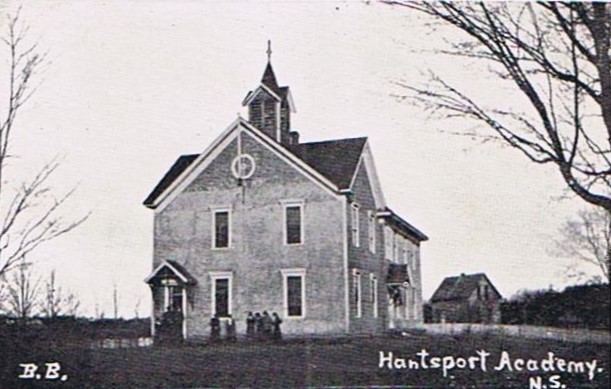


In 1848, the Baptist church was built by Mr. Elder. It was the first church in Hantsport.


In 1851, a bridge was built over the Half-way river between Hantsport and Mount Denson.
In 1852 Prince St. was made. It received its present name in 1861 when the Prince of Wales, [the father of our present] now our present King, passed down this street. He was on a tour through Nova Scotia. The people expected him to pass down William St. so they had arches made and the street decorated up very nicely. He came when they did not expect him, so no one was there to meet him. He asked a little boy, what was the shortest way to the shore, where his boat was waiting for him, so he was shown down Prince St. The people lined this path with spruce boughs down to the water, where his boat was which would take him to his warship.

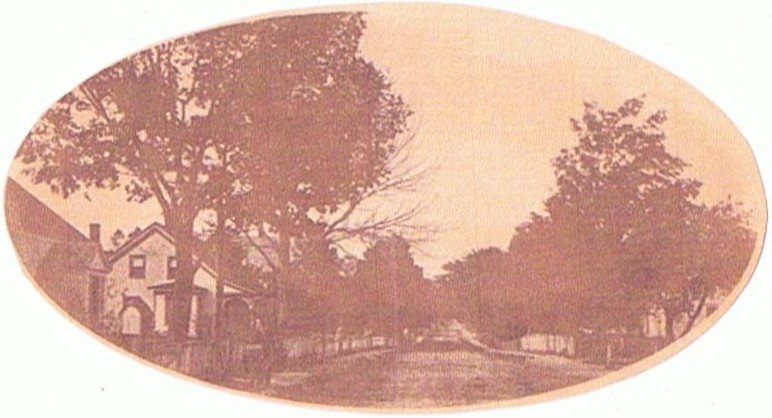
In 1861, The Methodist church was also built.




In 1865, the first vessel was built. It was called the “Flotilla”. It was built back of the cemetery. She was commanded by Capt. Hilbert Mitchner and the master builder was James Nunn. The first vessel built in Mr. Churchill’s shipyard was called “Daniel Huntley”. Mr. Daniel Huntley was the builder. The last large vessel that was built here was the Africa, built in 1893, and owned by E. Churchill & Sons.
Since 1882, there have been eight steamers built in this place. The first steamer, that one of the oldest inhabitants saw coming up the river, was called the “Maid of the Mist”. It came from St. John.
The first train ran through Hantsport on Christmas day 1869. It stopped at Hantsport, but as it was a very foggy morning, the train ran quite a distance by the station, before it could be stopped and had to run back again. The driver of the first train was Peter Robinson and the conductor’s name was Keys. The road had opened and the train ran between Kentville and Horton Landing, three months before it ran through to Windsor, owing to the bridges over the Avon and Horton rivers, not being completed. The locomotive used to build the road between Horton and Windsor, was brought from Windsor to Hantsport on a scow and landed and brought up Prince St. to the right of way of the railroad, on temporary rails by horse power. This railway was first called the “Windsor and Annapolis railway”, and then they changed the name to the “Dominion Atlantic Railway”.
In 1855, a fever spread over Hantsport; known as the “Black Fish Cholera”. A short time before this many black fish came up the river. The people thinking that these were good for oil, caught them. The refuse from the fish was not properly taken care of, thus giving this awful disease. About two hundred people died from this disease.
In 1888, the first hotel was opened up by Mr. Edward Davison.
In 1890, the Episcopal church was built.


In 1895, the town of Hantsport was incorporated. The first meeting of the town-council was held on the evening of April 27th 1895.
1st mayor was W. A. Porter for 1 yr. 1895 – 96
2nd ” ” C. G. Margeson ” 1 yr. 1896 – 97
3rd ” ” W. S. Whitman ” 5 yr, 97, 98, 99, 00, 01, 02
4th ” ” T. A. Masters ” 1 yr. 02 – 03
5th ” ” D. T. Faulkner ” 3 yr. 03, 04, 05, 06
In 1898, the Presbyterian church was built.
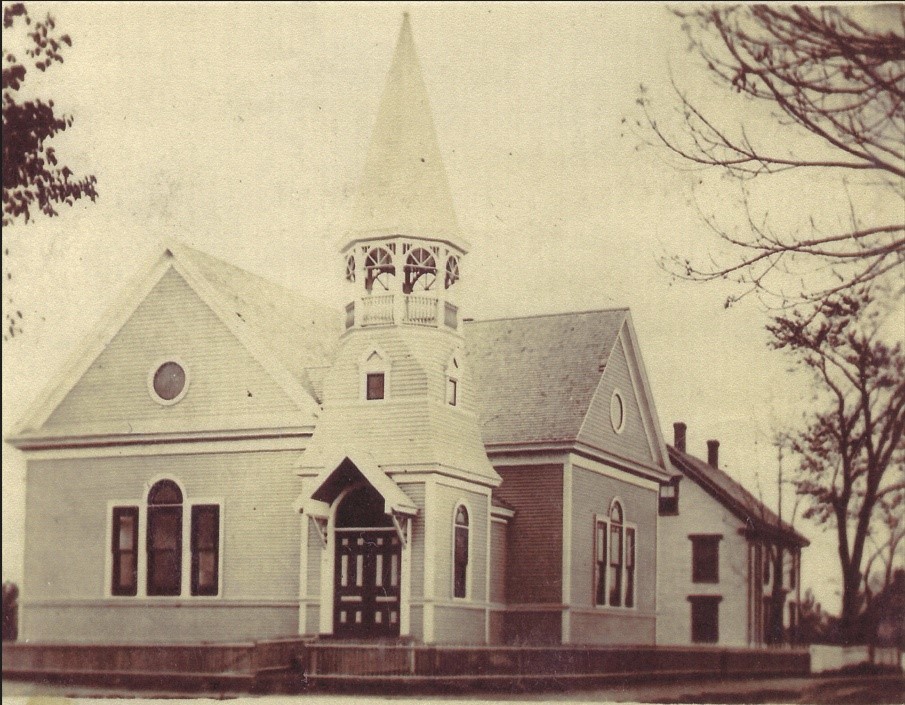
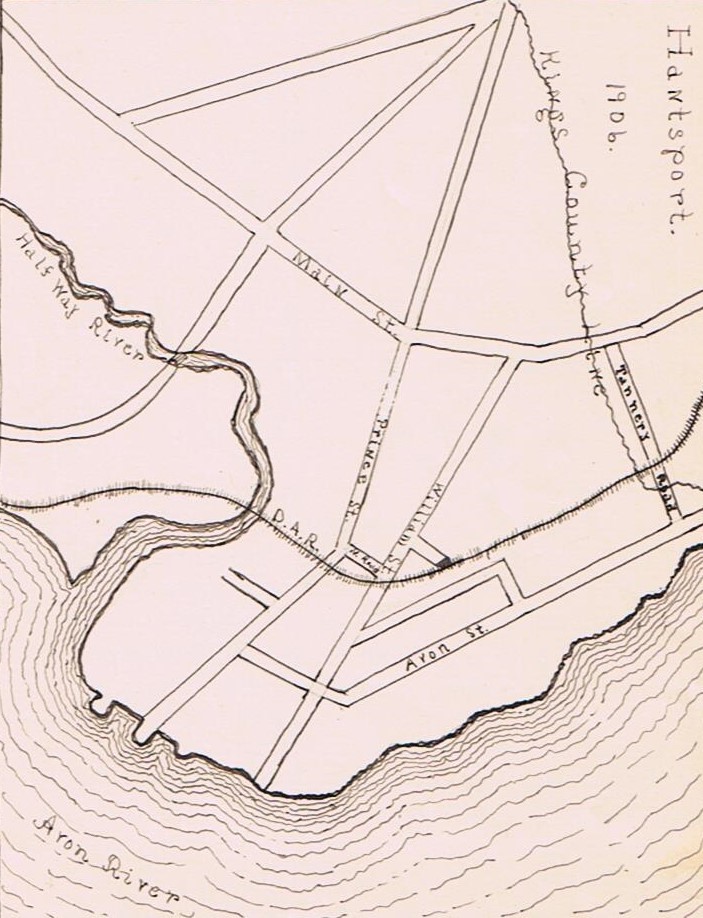
Early in 1904, the people began to feel the scarcity and need of a good water supply, and realizing that something must be done at once, set to work in earnest to agitate for a water system, with the result that at the present time the town has a gravitation system second to one (sic) in the Dominion of Canada, with a head of water, giving a pressure of about 100 pounds to the square inch, installed during the year 1905. The source of this fine water supply is the so called Davison Lake, with a surface of nearly twenty-five acres and an average depth of about ten feet, situated on the Falmouth mountain, about eight miles from the town. The whole system is about eleven miles in length.
In the year 1905, a large number of vessels were loaded here with lumber and laths from the mills of S. P. Bunjamin (sic) Co. and the Parrsboro Lumber Co. in Falmouth, the shipping facilities of the port being excellent for that purpose, the lumber and laths being brought down the river on large scows. A set of graving blocks for the purpose of caulking and repairing vessels of all sizes also adds to the business of the water front. Hantsport is also the headquarters of all the tow boats on the river.
Owing to the excellent shipping facilities of Hantsport, the local Government selected it as a distributing centre and acquired a building in 1905 for the storage of their drills, with a resident engineer in charge.
There is a large apple storehouse in Hantsport on the grounds of the D.A.R. which is said, to be second to none on the line. Through this fine storehouse several thousand barrels of apples are shipped every year, large quantities of pressed hay as well as tons of freestone from the neighbouring quarries are also shipped from Hantsport. All together the D.A.R. is said to have done a larger business at their Hantsport station during1905, than has been done for a number of years.
The different lines of business in Hantsport during 1905 have been up to the average and people are hopeful that the town is now on the eve of better times.
END OF BOUND DOCUMENT
The following loose notes were found on three pages with the bound document.

In 1906 the Town Hall was built. This building now contains the offices of the Town clerk, Bank of Nova Scotia, Headquarters of the fire department, and the Fireman’s club-room.
At the present time we have two splendid factories. The Hantsport Fruit Basket Factory owned by D. W. Murray and the Confectionary factory owned by George H. Yeaton & Sons. These factories are doing a splendid business.
On the evening of April 28/13 a meeting of rate-payers was called and vote was taken, the majority in favor of putting sewage in the town, taking in a few of the streets.
During this summer a large number of Italians are employed by the Canadian Pacific Railway to build an arbiteau (sic) across the Half Way River.
A number of new residences are also being built here this summer.
I think that we can honestly say that our little town is prosperous and on the eve of better times.
